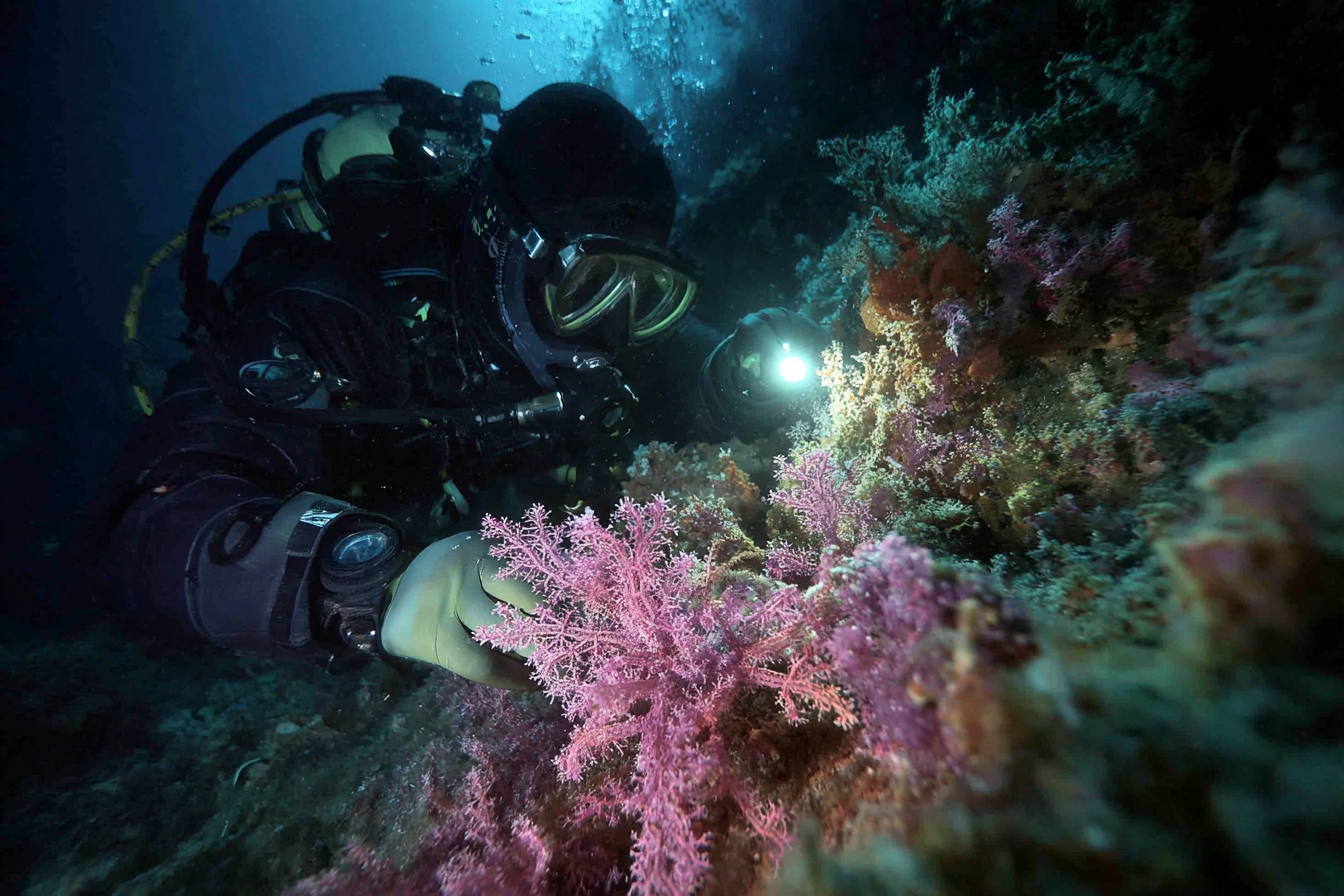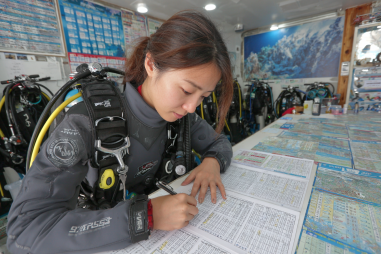Scuba diving during the day offers vibrant views of colorful coral reefs and bustling marine life, but once the sun sets, the ocean transforms into a mysterious realm teeming with creatures adapted to the night. Nocturnal marine life presents a fascinating window into behaviors and species rarely seen through daytime dives. Exploring this underwater world after dark can be both thrilling and educational, revealing the dynamic ecosystem that thrives when most are asleep. If you’re eager to expand your diving adventures and encounter the unique animals that emerge at night, understanding the nocturnal marine ecosystem, the species you’ll meet, and how to dive safely in the dark is essential.
An Introduction to Nocturnal Marine Ecosystems
The ocean at night is a vastly different environment compared to daylight hours. Underwater landscapes take on an ethereal quality as bioluminescent organisms glow and the usual reef residents alter their behaviors or retreat to shelter. Nocturnal marine ecosystems encompass a wide range of habitats, from coral reefs and sandy bottoms to seagrass beds and rocky shorelines, each hosting species specialized for life after sunset.
At night, predation, feeding, and mating activities intensify for many animals. Some species avoid daylight predators by emerging under cover of darkness, while others use the dark to hunt more effectively. As a diver, entering this nocturnal world means witnessing firsthand the intricate balance and adaptations evolved to thrive in low-light conditions.
Common Nocturnal Marine Species Seen While Diving
When you dive after dark, a whole new cast of characters appears. Some of the most commonly encountered nocturnal marine life includes:
- Crustaceans: Various species of crabs and lobsters, often hiding among the reef or burrowing in the sand during the day, become active night hunters, scuttling across the seafloor or emerging from crevices.
- Octopuses: These crafty and intelligent creatures are masters of camouflage and often forage under the cover of darkness. Night dives may reveal them actively hunting or moving across the reef.
- Moray Eels: Usually tucked away during daylight, morays come out at night to hunt small fish and crustaceans, their slender bodies weaving through rocky reefs.
- Fish with Enhanced Night Vision: Many fish species, like squirrelfish and soldierfish, have large eyes adapted for low-light conditions and become more conspicuous visitors of the reef after sunset.
- Nocturnal Sharks: Some shark species, such as the blacktip reef shark, increase their activity at night, patrolling reefs in search of prey.
- Bioluminescent Organisms: While not always creatures you can hold or approach, glowing plankton and jellyfish create a surreal, sparkling effect in the water that adds to the night diving magic.
- Sea Cucumbers and Other Invertebrates: These slow-moving creatures typically emerge from hidden resting spots to feed on detritus once darkness falls.
Behavioral Differences Between Day and Night
One of the most fascinating aspects of night diving is observing how behaviors shift as the sun sets. Many reef fish that congregate and feed during the day seek shelter within coral crevices to minimize predation risk at night. Conversely, nocturnal species become more active, engaging in foraging, hunting, mating, and territorial behaviors.
Predators use darkness to their advantage, stalking prey that’s less vigilant or encumbered by reduced visibility. For example, moray eels can leverage their keen sense of smell and lateral line system to detect movements in the dark, positioning themselves for a successful ambush. Similarly, certain shrimp species perform elaborate courtship dances that are visible only under artificial light. The transition from day to night is a dynamic and complex period in the marine ecosystem, offering divers unique insights into survival strategies underwater.
Night Diving Safety and Equipment Essentials
Diving at night comes with additional safety considerations and requires some specialized equipment to ensure a fun and secure experience. Key essentials include:
- Reliable Dive Lights: A primary dive light is indispensable for navigation and spotting marine life. Many night divers also carry a backup light to avoid getting stranded in the dark.
- Surface Marker Buoys (SMBs): These increase your visibility to boats, especially important at night when you can’t be seen easily on the water’s surface.
- Compasses and Navigation Aids: Navigating underwater without natural light can be disorienting. Compasses help maintain your orientation and allow you to find your entry and exit points.
- Glow Sticks or Light Markers: These can help buddies keep track of one another and add to group safety.
- Proper Exposure Protection: Night temperatures can drop in some dive locations, so appropriate wetsuit thickness or additional thermal layers may be needed.
Additionally, proper training and briefing on night diving protocols are crucial. Divers should stay close to their buddies, move slowly and deliberately to avoid startling nocturnal creatures, and maintain good buoyancy control to protect the fragile environment.
Techniques for Observing and Photographing Nocturnal Life
Observing marine life at night requires a shift in approach compared to daytime dives. Here are some tips to enhance your night diving experience:
- Move Slowly and Use Limited Light: Bright lights can scare away shy animals. Use low beam settings and gentle movements to avoid startling wildlife.
- Focus on One Spot: Instead of swimming rapidly, find an area of interest and observe patiently. Many nocturnal animals emerge near rocks, coral heads, or sandy patches.
- Watch for Eye Shine: Many marine creatures’ eyes reflect light. Scanning slowly for these glows can help locate hidden animals such as shrimp, crabs, or small fish.
- Use Red Filters or Red Lights: Red light has less impact on nocturnal creatures’ behavior and helps you observe without disturbing them, though it can be harder for humans to see colors.
- For Photography: Use appropriate underwater strobes or continuous lights designed for night use. Keep your equipment stable, as slow shutter speeds are common in low light.
- Practice Buoyancy Control: To avoid damaging the reef or stirring up sediment that reduces visibility, maintain neutral buoyancy.
Conservation Considerations for Night Divers
While night diving offers unique opportunities, it also comes with responsibilities to protect the delicate marine environment. Many nocturnal species are sensitive to artificial light, which can disrupt their natural behaviors and stress them.
To dive responsibly, consider these conservation tips:
- Use low-intensity lights and avoid shining them directly into animals’ eyes.
- Minimize contact with the reef and seabed to preserve fragile habitats.
- Follow local diving regulations and guidelines designed to protect nocturnal species.
- Educate yourself about species-specific sensitivities and avoid unnecessary disturbance.
- Report any illegal or harmful activities observed during your dives.
Respect and stewardship help ensure the nocturnal wonders of the ocean remain vibrant and healthy for future generations of divers and marine life alike.
Unlocking the Mysteries of the Ocean at Night
Night scuba diving opens a portal to a secretive segment of marine life, providing a captivating experience distinct from the daytime ocean. Encountering creatures that rely on darkness for survival enriches our understanding and appreciation of marine ecosystems. With proper preparation, equipment, and respect for underwater life, divers can safely explore the vibrant nocturnal world that thrives beneath the waves.
For those eager to deepen their connection with the ocean, a night dive offers not just thrills but also valuable lessons about the importance of protecting these fragile habitats. Whether glimpsing a glowing plankton bloom or watching an elusive octopus hunt, the ocean after dark is an enchanting frontier waiting to be discovered.







